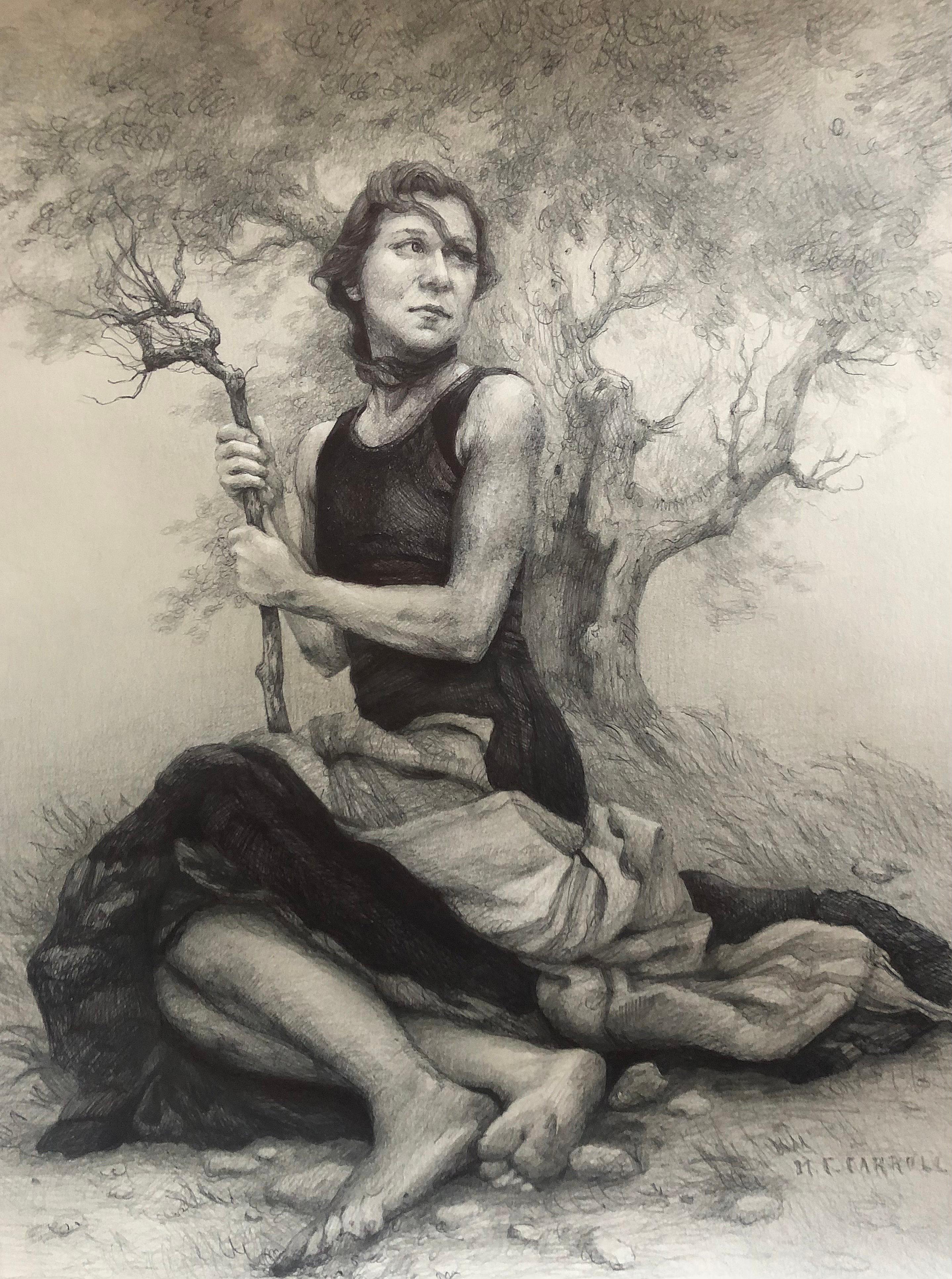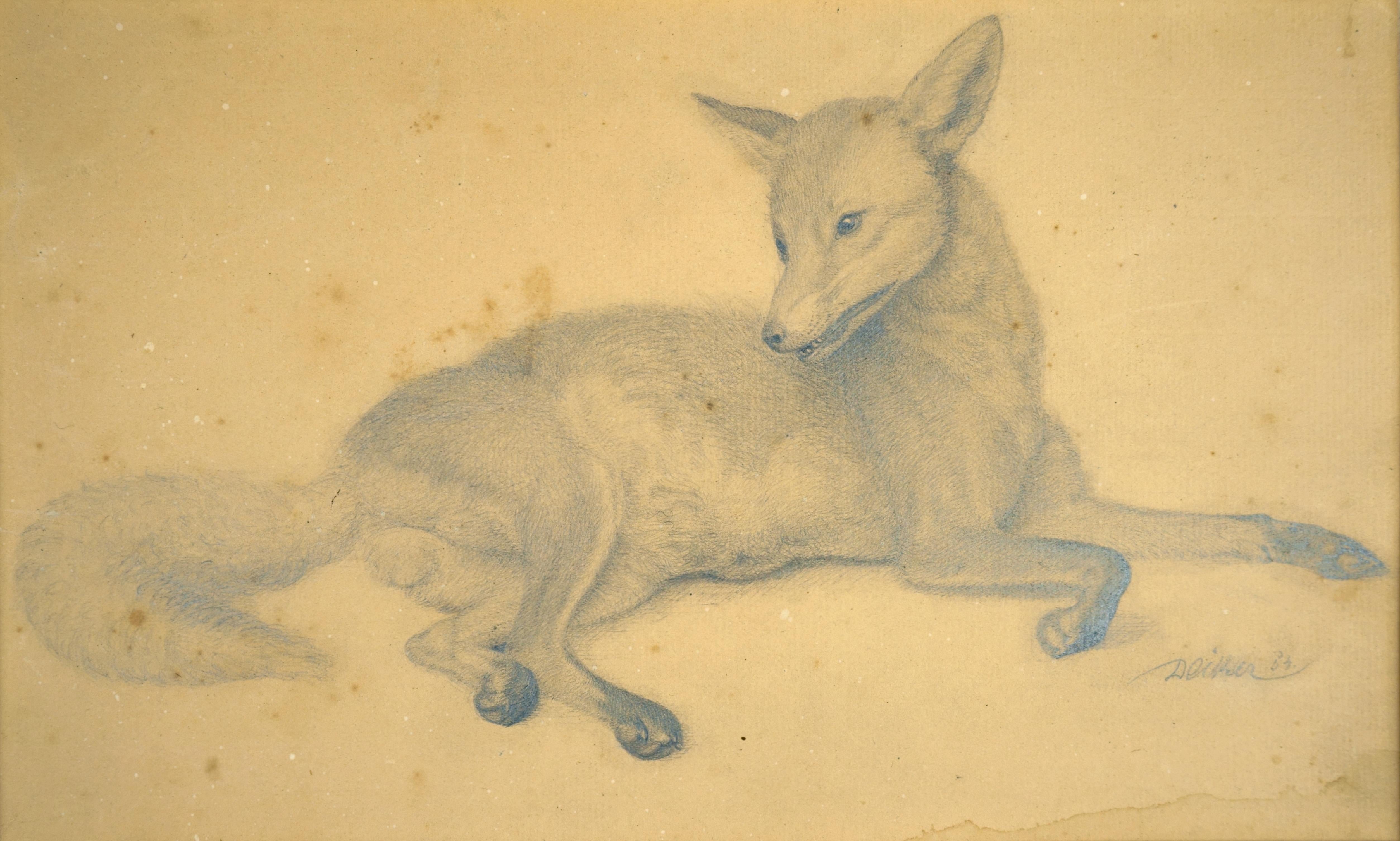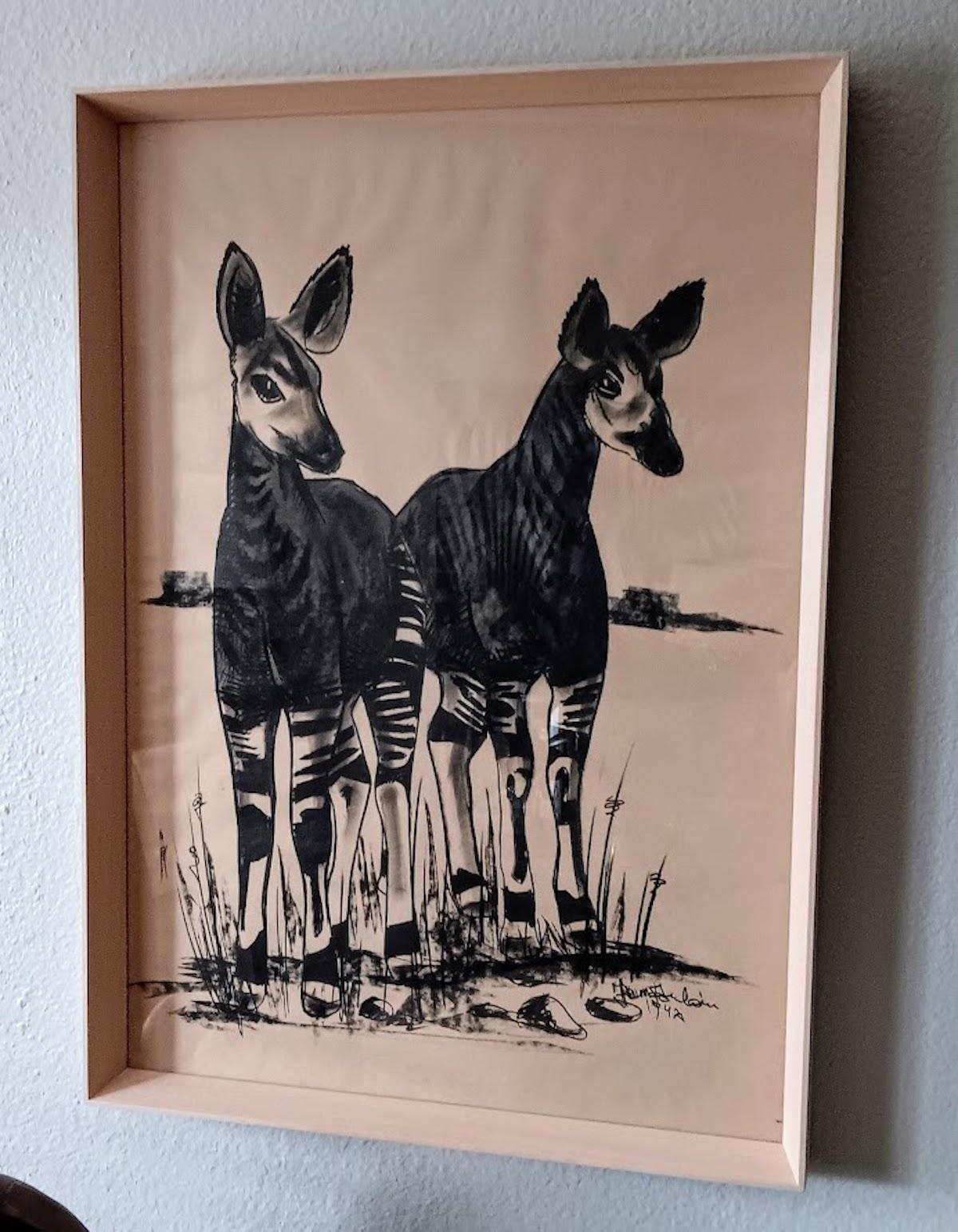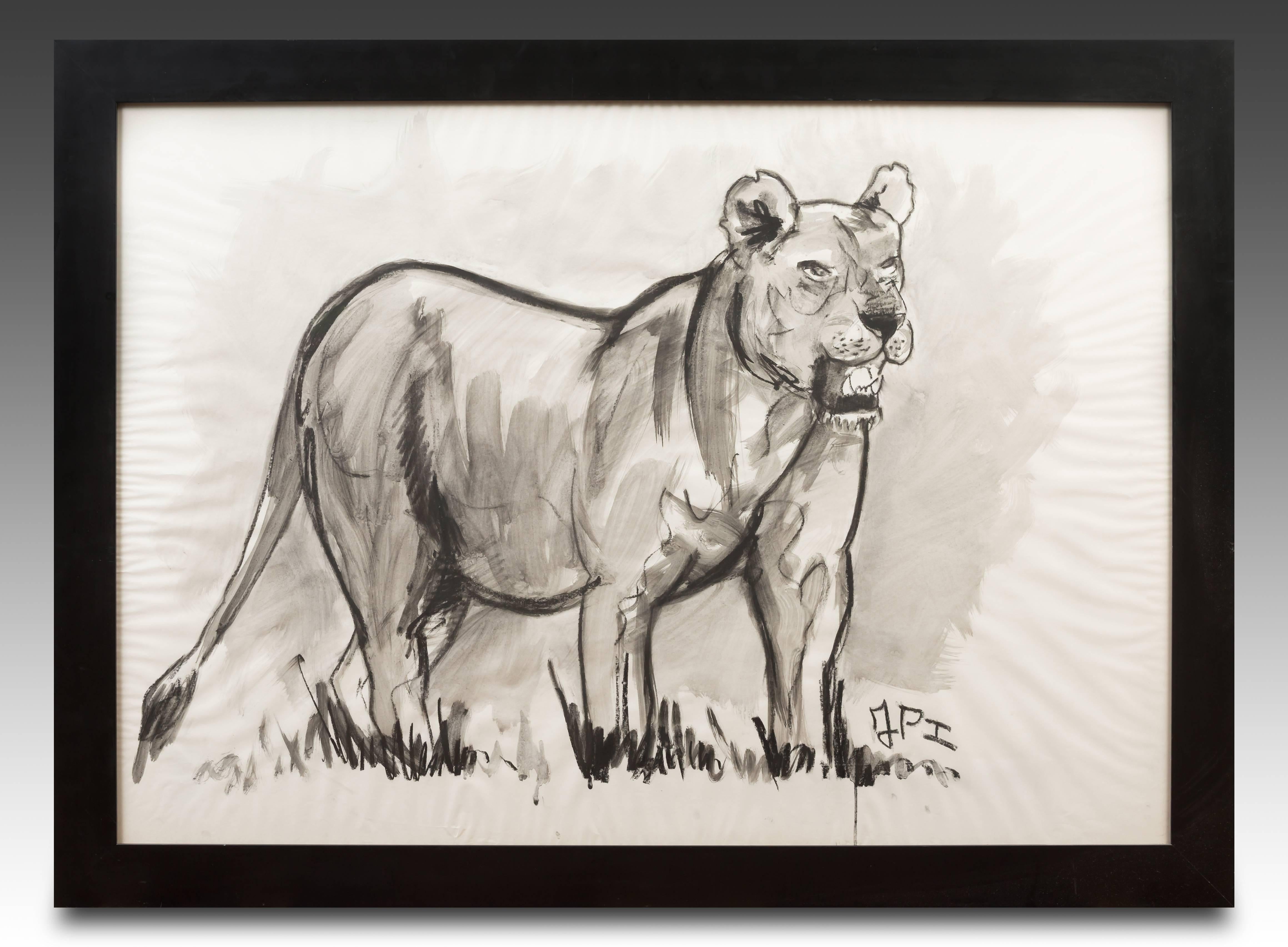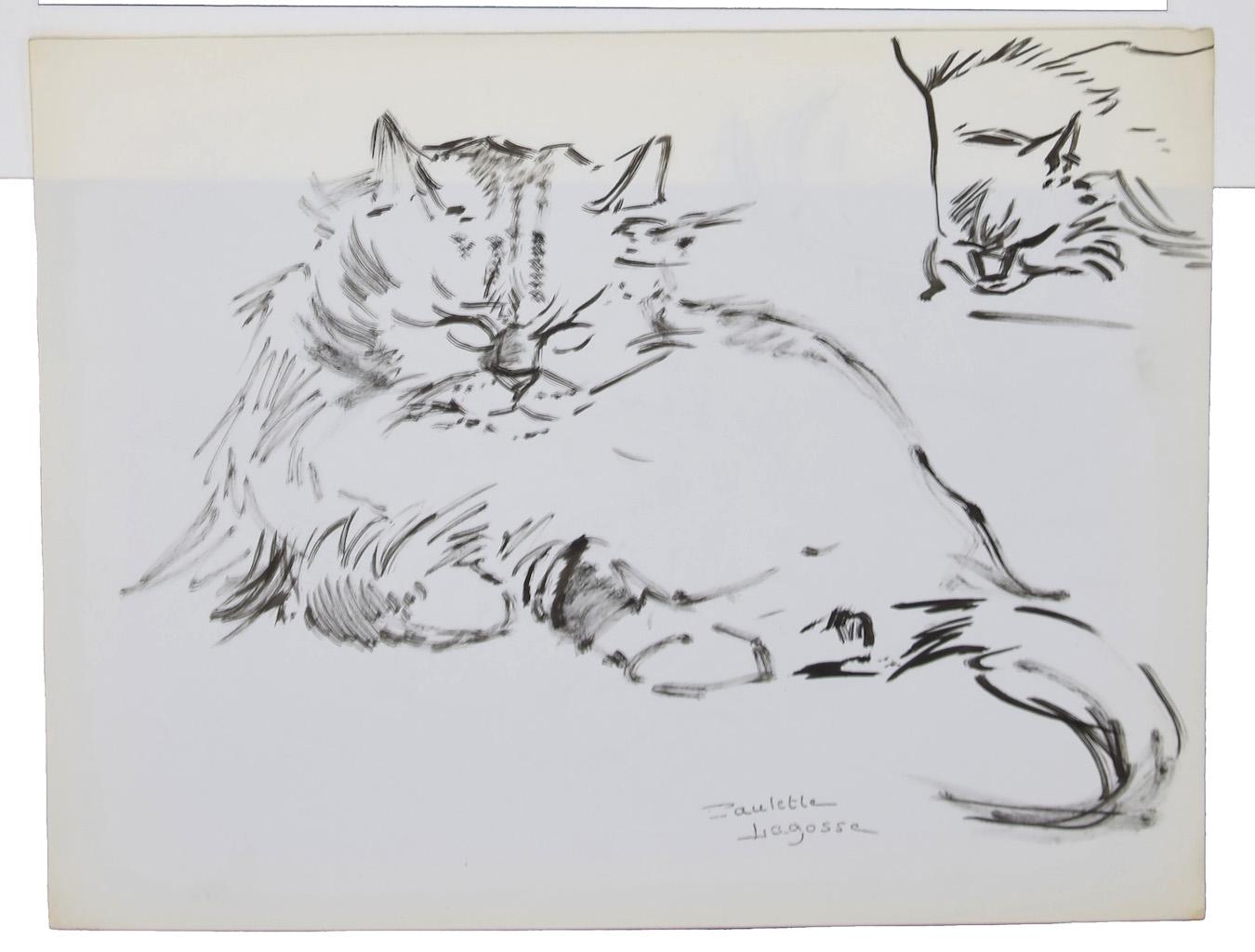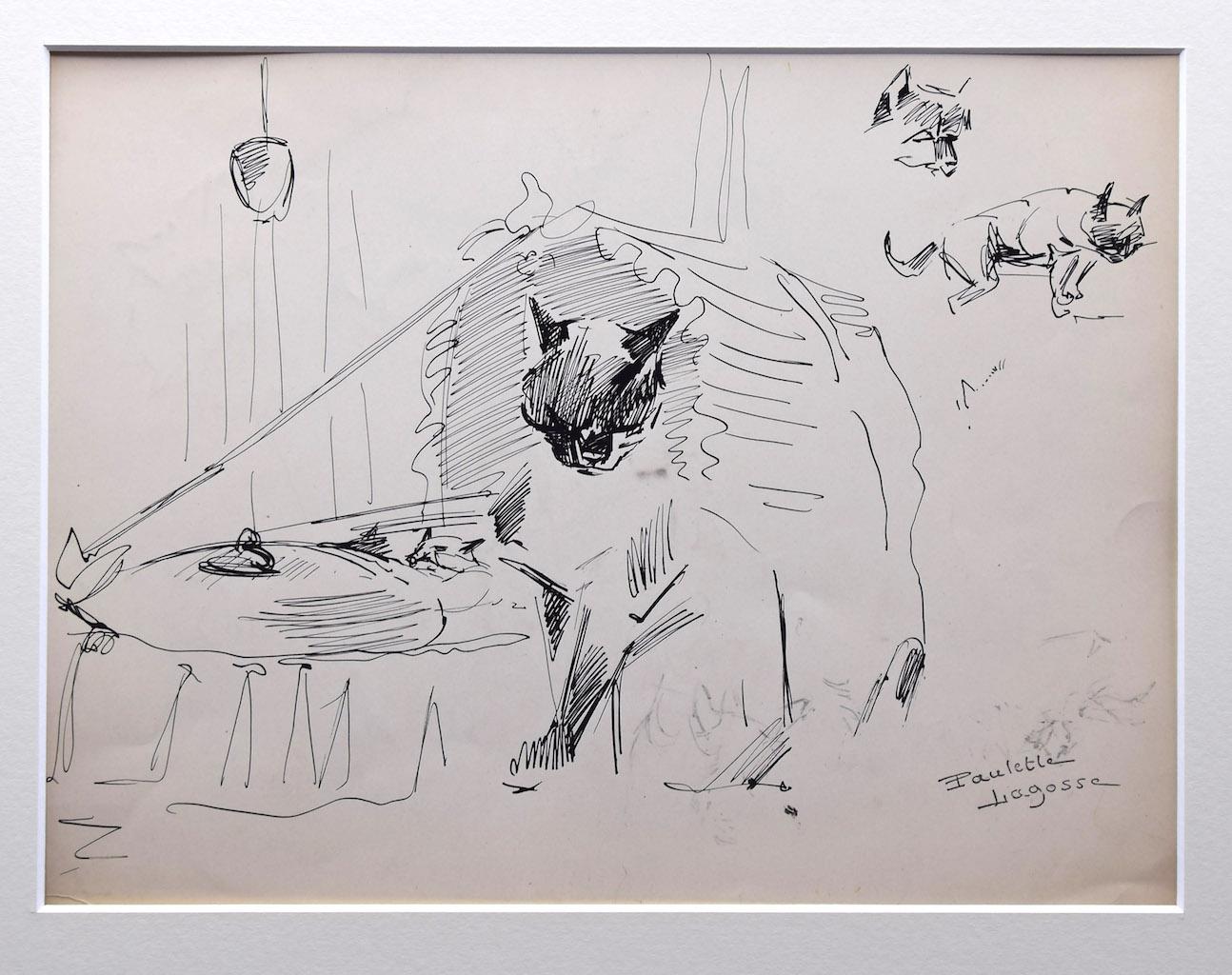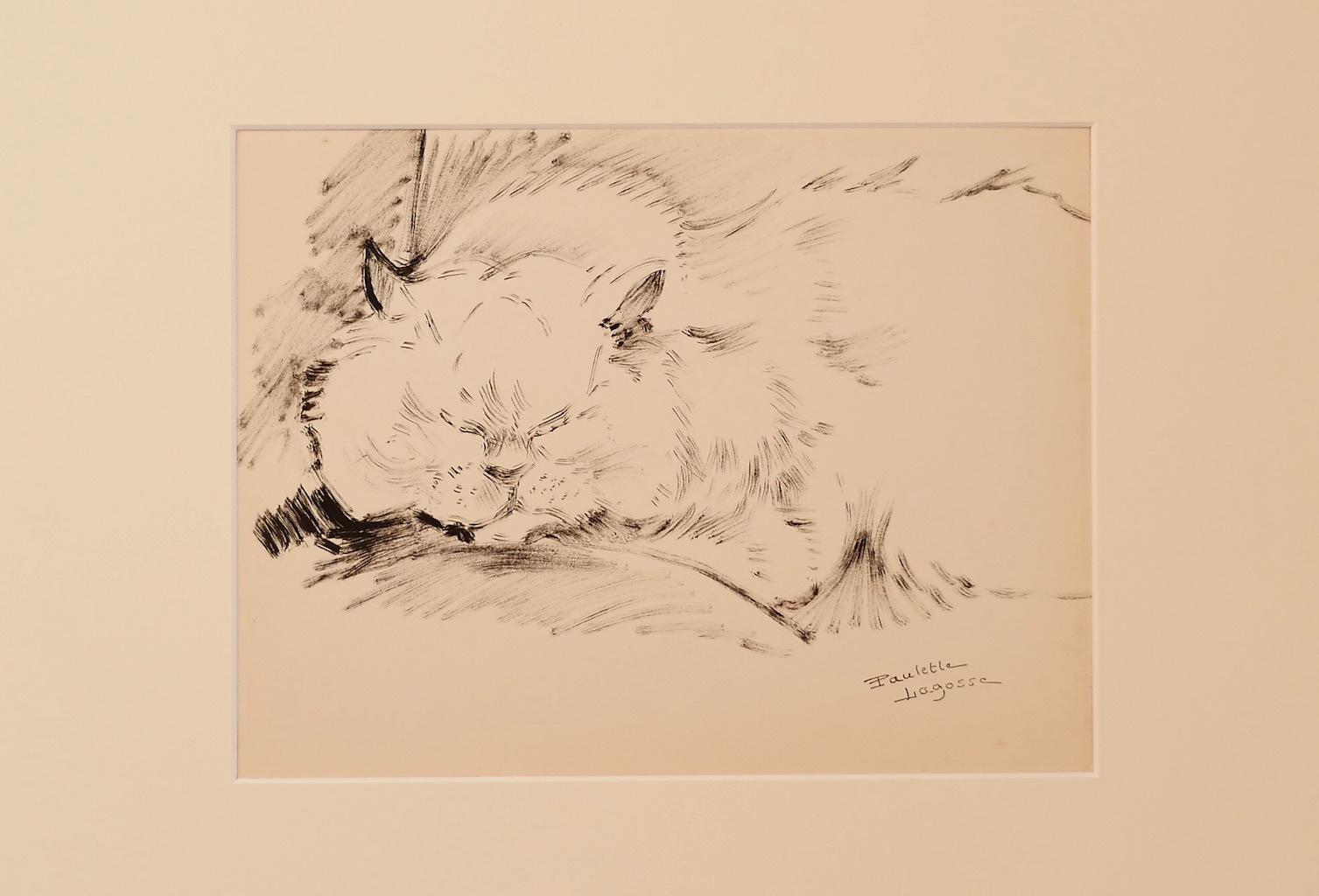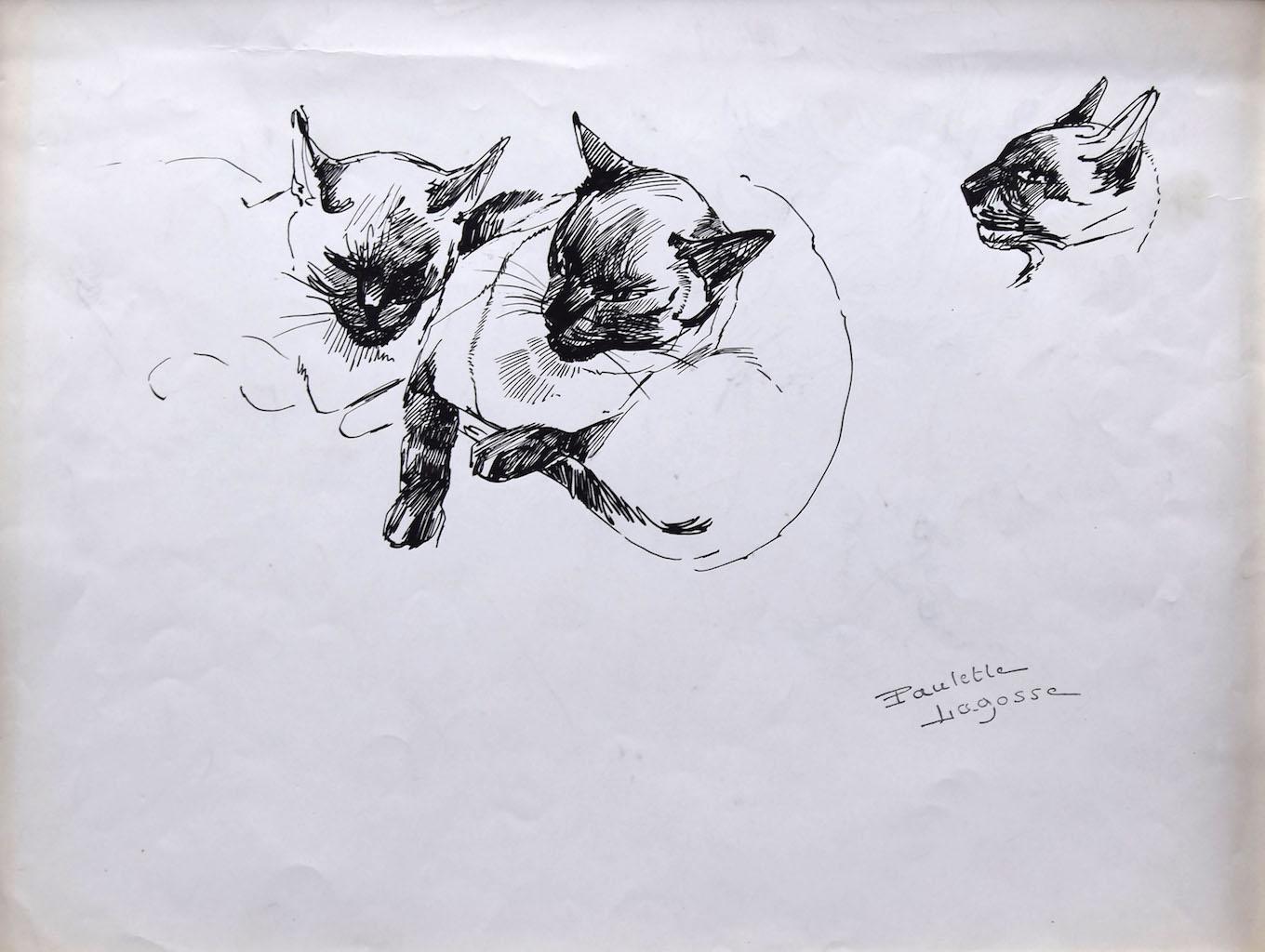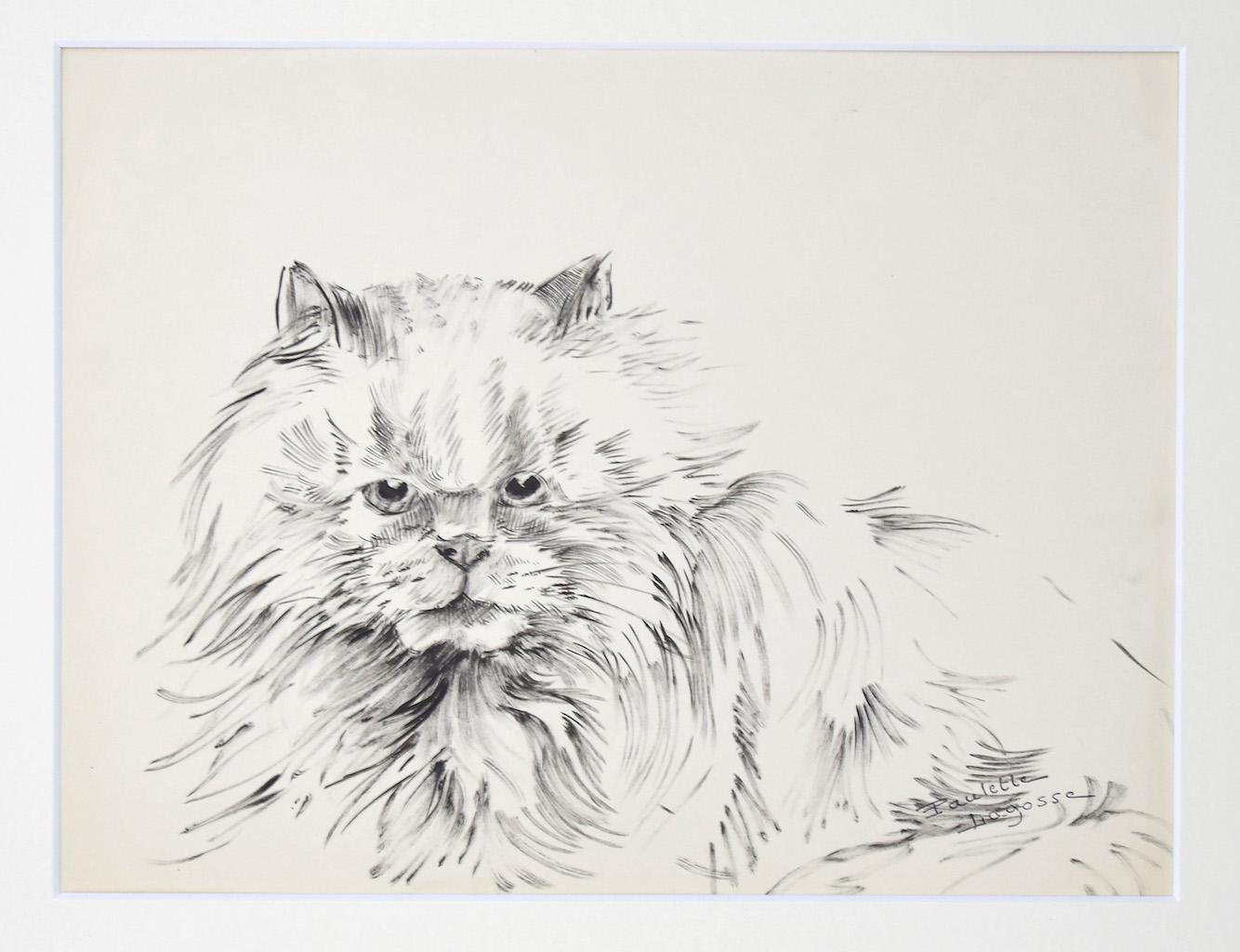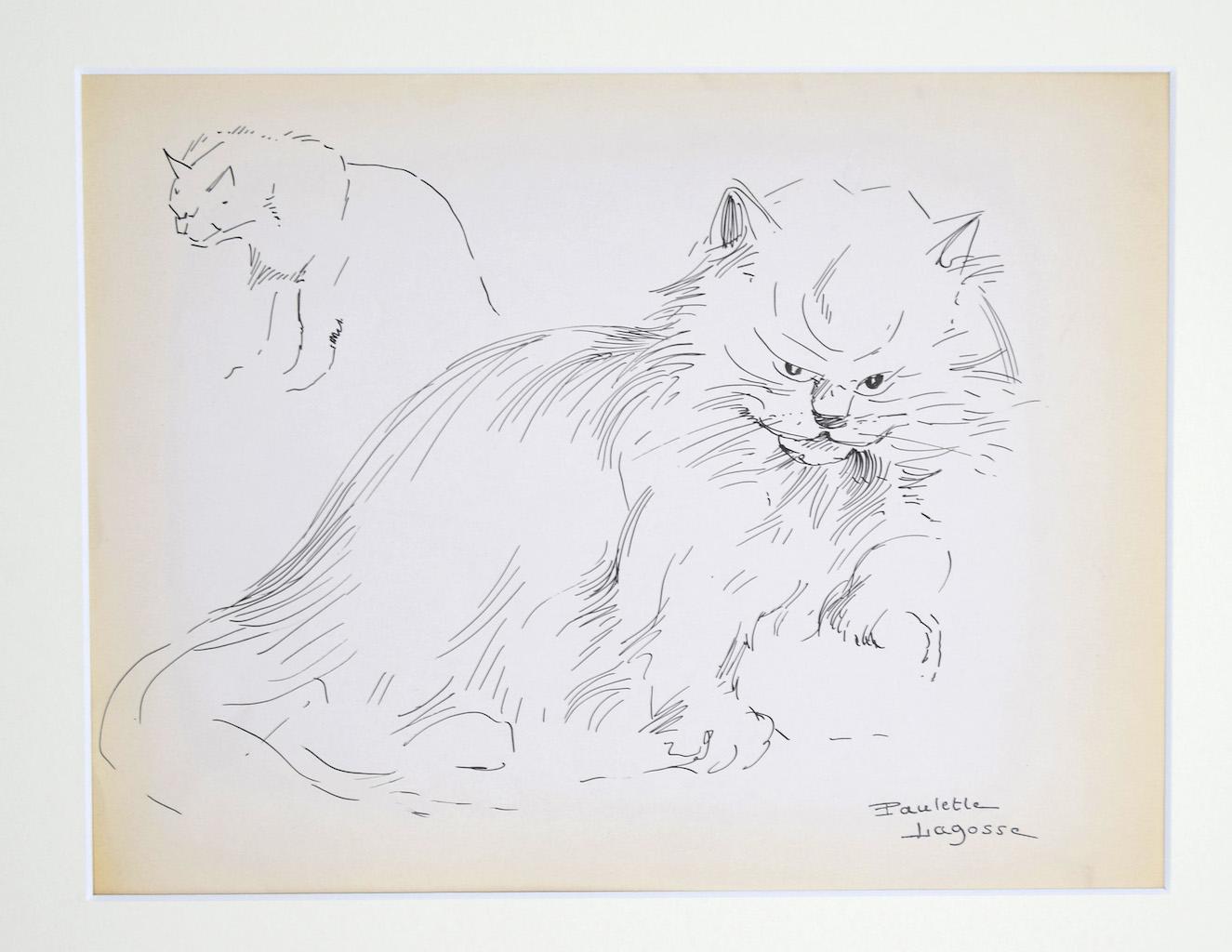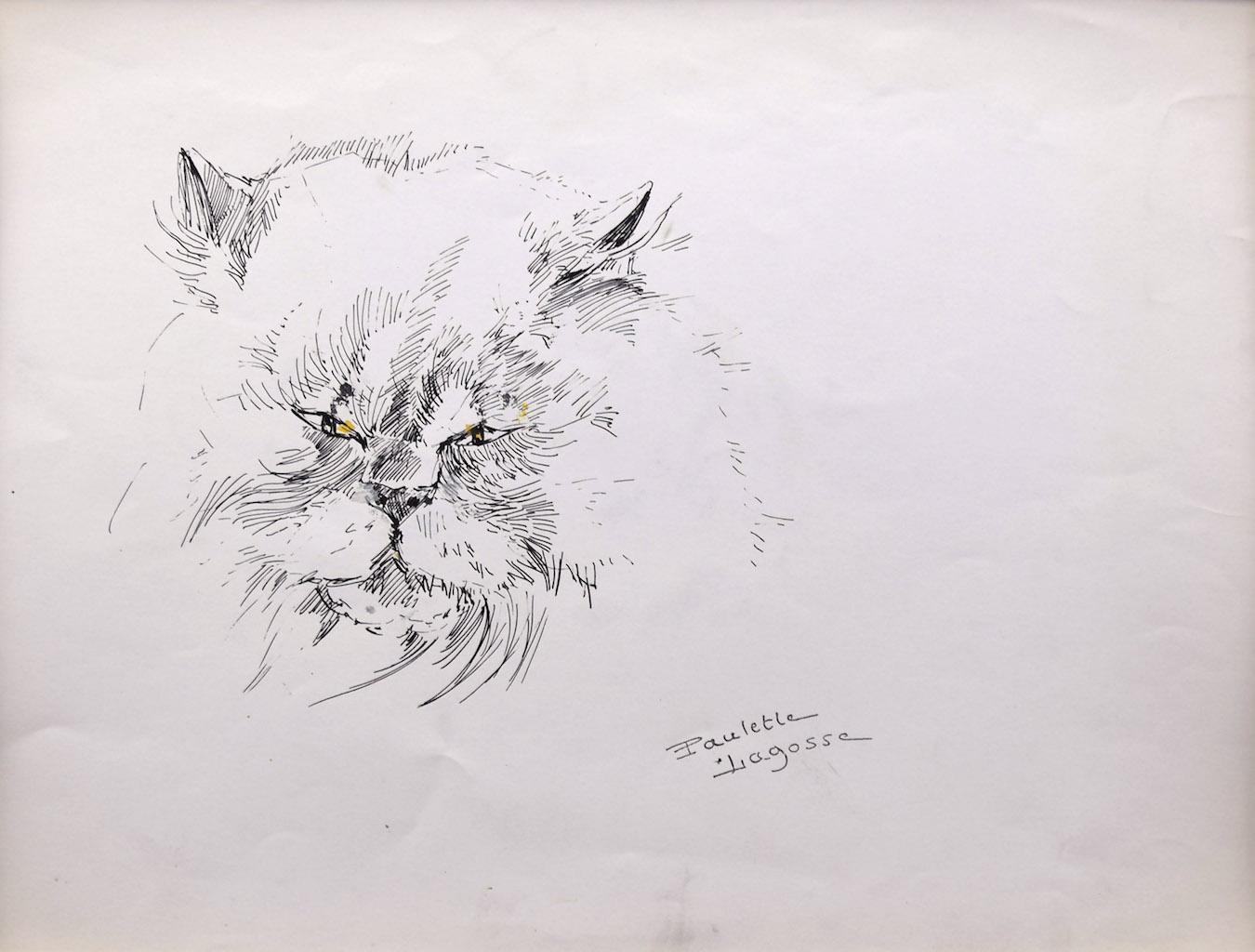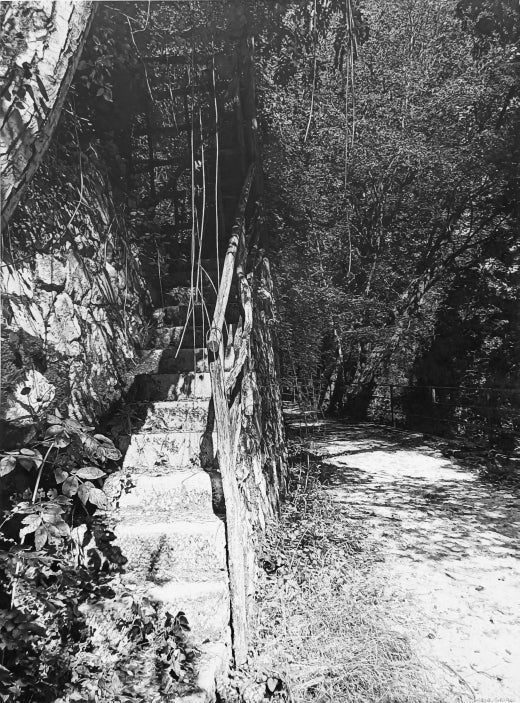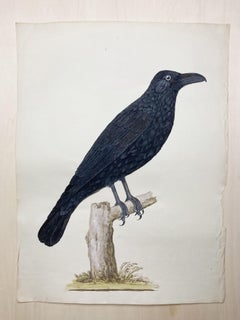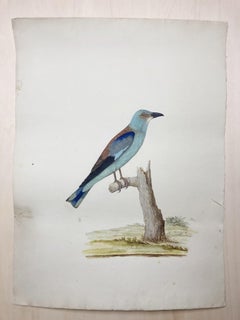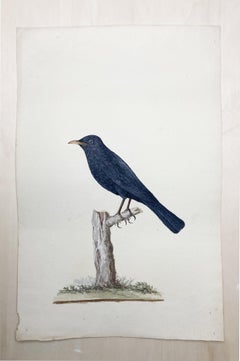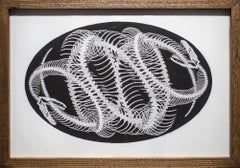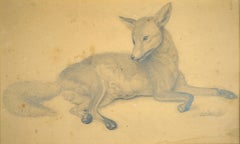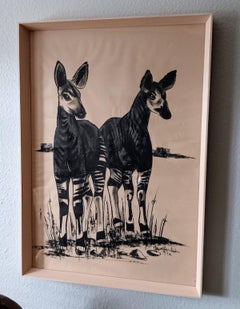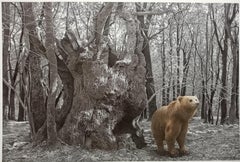
Black and white pencil drawing and watercolour of a brown bear in the woods
View Similar Items
Want more images or videos?
Request additional images or videos from the seller
1 of 8
Sara MenonBlack and white pencil drawing and watercolour of a brown bear in the woods2019
2019
About the Item
- Creator:Sara Menon (1985, Italian)
- Creation Year:2019
- Dimensions:Height: 8.27 in (21 cm)Width: 13.98 in (35.5 cm)
- Medium:
- Movement & Style:
- Period:
- Framing:Framing Options Available
- Condition:
- Gallery Location:Milan, IT
- Reference Number:1stDibs: LU431310993352
undefined
About the Seller
5.0
Recognized Seller
These prestigious sellers are industry leaders and represent the highest echelon for item quality and design.
Established in 1950
1stDibs seller since 2016
25 sales on 1stDibs
Authenticity Guarantee
In the unlikely event there’s an issue with an item’s authenticity, contact us within 1 year for a full refund. DetailsMoney-Back Guarantee
If your item is not as described, is damaged in transit, or does not arrive, contact us within 7 days for a full refund. Details24-Hour Cancellation
You have a 24-hour grace period in which to reconsider your purchase, with no questions asked.Vetted Professional Sellers
Our world-class sellers must adhere to strict standards for service and quality, maintaining the integrity of our listings.Price-Match Guarantee
If you find that a seller listed the same item for a lower price elsewhere, we’ll match it.Trusted Global Delivery
Our best-in-class carrier network provides specialized shipping options worldwide, including custom delivery.More From This Seller
View AllAnimal drawing of sitting crow in black by enlightened british painter
By Peter Paillou
Located in Milan, IT
Peter Paillou (c.1720 – c.1790) was a British artist best known for his paintings of birds, many of which were used as book illustrations. He gained repute in the 18th century as a natural history painter and illustrator. He was employed by two leading naturalists and antiquarians of the time, Taylor White (1701-1772) and Thomas Pennant (1726-1798). He illustrated the latter's British Zoology and decorated the hall at Downing, Pennant's house in Flintshire, with several pictures of birds...
Category
18th Century Realist Animal Drawings and Watercolors
Materials
Tempera, Watercolor
Wildlife drawing of jay bird of light blue by enlightened british painter
By Peter Paillou
Located in Milan, IT
Peter Paillou (c.1720 – c.1790) was a British artist best known for his paintings of birds, many of which were used as book illustrations. He gained repute in the 18th century as a natural history painter and illustrator. He was employed by two leading naturalists and antiquarians of the time, Taylor White (1701-1772) and Thomas Pennant (1726-1798). He illustrated the latter's British Zoology and decorated the hall at Downing, Pennant's house in Flintshire, with several pictures of birds...
Category
18th Century Realist Animal Drawings and Watercolors
Materials
Tempera, Watercolor
Animal drawing of magpie bird of blue and white by enlighted british painter
By Peter Paillou
Located in Milan, IT
Peter Paillou (c.1720 – c.1790) was a British artist best known for his paintings of birds, many of which were used as book illustrations. He gained repute in the 18th century as a natural history painter and illustrator. He was employed by two leading naturalists and antiquarians of the time, Taylor White (1701-1772) and Thomas Pennant (1726-1798). He illustrated the latter's British Zoology and decorated the hall at Downing, Pennant's house in Flintshire, with several pictures of birds...
Category
18th Century Realist Animal Drawings and Watercolors
Materials
Tempera, Watercolor
Wildlife painting of black bird sitting by enlightened british painter
By Peter Paillou
Located in Milan, IT
Peter Paillou (c.1720 – c.1790) was a British artist best known for his paintings of birds, many of which were used as book illustrations. He gained repute in the 18th century as a natural history painter and illustrator. He was employed by two leading naturalists and antiquarians of the time, Taylor White (1701-1772) and Thomas Pennant (1726-1798). He illustrated the latter's British Zoology and decorated the hall at Downing, Pennant's house in Flintshire, with several pictures of birds...
Category
18th Century Realist Animal Drawings and Watercolors
Materials
Tempera, Watercolor
Bird painting of woodpecker of black and red by enlightened painter
By Peter Paillou
Located in Milan, IT
Peter Paillou (c.1720 – c.1790) was a British artist best known for his paintings of birds, many of which were used as book illustrations. He gained repute in the 18th century as a natural history painter and illustrator. He was employed by two leading naturalists and antiquarians of the time, Taylor White (1701-1772) and Thomas Pennant (1726-1798). He illustrated the latter's British Zoology and decorated the hall at Downing, Pennant's house in Flintshire, with several pictures of birds...
Category
18th Century Realist Animal Drawings and Watercolors
Materials
Tempera, Watercolor
Wildlife animal drawing of grey and white bird by enlightened painter
By Peter Paillou
Located in Milan, IT
Peter Paillou (c.1720 – c.1790) was a British artist best known for his paintings of birds, many of which were used as book illustrations. He gained repute in the 18th century as a natural history painter and illustrator. He was employed by two leading naturalists and antiquarians of the time, Taylor White (1701-1772) and Thomas Pennant (1726-1798). He illustrated the latter's British Zoology and decorated the hall at Downing, Pennant's house in Flintshire, with several pictures of birds...
Category
18th Century Realist Animal Drawings and Watercolors
Materials
Tempera, Watercolor
You May Also Like
Umbilical Filigree Ovum (drawing)
By Hunter Stabler
Located in Philadelphia, PA
This is an original India ink, graphite, chalk, and pen on paper drawing by Hunter Stabler measuring 14.25”h x 20.25”w framed. The piece ships in the pictured frame.
Hunter Stable...
Category
21st Century and Contemporary Contemporary Figurative Drawings and Water...
Materials
Paper, Chalk, India Ink, Ballpoint Pen, Graphite
"Incantation" Graphite Drawing
By Mary Carroll
Located in Denver, CO
Mary Carroll's (US based) "Incantation" is an original, handmade graphite drawing that depicts a female model sitting at the base of a tree.
Artist Biography:
Born in 1979 West Vir...
Category
2010s Realist Figurative Drawings and Watercolors
Materials
Paper, Ballpoint Pen, Graphite
Vigilant Fox - The psyche of the fox -
Located in Berlin, DE
Carl Friedrich Deiker (1838 Wetzlar - 1892 Düsseldorf). Vigilant fox. Pencil drawing on brown paper, 18 × 29.5 cm (inside measurement), 31.5 x 43.5 cm (mount), signed and dated "Deiker [18]54" at lower right.
- a little bit stained, with a light water stain at lower right
About the artwork
Carl Friedrich Deiker's consummate ability to depict animals is already evident in this early work. He brought a whole new psychological dimension to animal painting, so that one could literally speak of animal portraits.
The naturalistic appearance of the fox alone makes it seem alive. Every strand of muscle, even every hair, is captured, which requires an intensive artistic study of animal anatomy and physiology. But the fox's real liveliness comes not from its natural appearance, but from its internal movement: Stretched out, it has been brought out of rest. It turns around and, with its ears pricked up, looks intently in the direction from which it has seen something. His mouth is slightly open and his pointed teeth are bared, as if he were growling. Tension gradually takes hold of his whole body. While the hind legs were still in a relaxed position, closely observed by Deiker, one front leg was already raised, ready to begin a rising movement. The fox seems so alarmed with all its senses that one gets the impression that, at any moment, its tail will move jerkily and the animal will jump up.
While wild animals have traditionally been portrayed as beasts or anthropomorphised, often for caricatural purposes, Deiker explores their inherent nature by attempting to capture their psychic impulses. The wild animal is neither bestial nor human, but a creature in its own right, valued by Deiker for its own sake. In this way, he brought the dignity of the animal into representation and raised animal painting to a whole new artistic level.
About the artist
Carl Friedrich Deiker was the son of the drawing teacher Christian Friedrich Deiker and the younger brother of the animal painter Johannes Deiker. In addition to the family art lessons, Christian Friedrich shared a studio with his brother Johannes at Braunfels Castle, Deiker attended the drawing academy in Hanau, and from 1858 he was a student at the Karlsruhe Art Academy, where he studied under the landscape painter Johann Wilhelm Schirmer. Carl Friedrich Deiker was already in demand as an artist during his first year: Grand Duke Frederick I of Baden, Margrave Max of Baden and Grand Duke Michael of Russia bought hunting scenes by him.
In 1859 he went on a study trip to the Reinhardswald. Just as the Barbizon School had rediscovered the landscape, Deiker opened up the forest for animal painting.
From 1861-64 Deiker had his own studio in Karlsruhe, then moved to Düsseldorf, where his brother Johannes followed four years later. Deiker married a daughter of the landscape painter Karl Hilger and remained in Düsseldorf until his death.
In 1868 he finally achieved international fame with his painting 'Pursued Noble Deer' and was regarded as a virtuoso new founder of animal painting.
"Deiker brought for the first time a truly great artistic quality to animal painting [...]".
- Hans Vollmer
From 1870 he participated in the academic art exhibitions in Berlin, Dresden, Munich and Hanover. He was also very busy as an illustrator. He drew for the Gartenlaube, the Salon, the Universum, and produced many of the finely illustrated hunting and animal books of the period. He also worked as a printmaker, while his oil paintings circulated as reprints by Franz Dinger.
From 1865 to 1892 Deiker was a member of the artists' association Malkasten.
Carl Friedrich Deiker's life's work was honoured with a large posthumous memorial exhibition at the Düsseldorf Kunsthalle in 1892.
His son Carl Deiker, born in 1879, also became a painter.
Selection of art museums that own works by Carl Friedrich Deiker:
Hamburger Kunsthalle / Kunsthalle Karlsruhe / Kunstmuseum Düsseldorf / Wallraff Richartz Cologne.
Selected Bibliography
H. Schmidt: Johannes and...
Category
1850s Naturalistic Animal Drawings and Watercolors
Materials
Pencil
$1,296 Sale Price
20% Off
Antilopes, Drawing by Jean Poulain, Framed
By Jean Poulain
Located in Pasadena, CA
Jean Poulain 1884-1967
Jean Poulain was born in 1884 in Katanga (formerly Belgian Congo). The self-taught artist from an early age, he will be in search of all the emotions and beau...
Category
1940s Naturalistic Figurative Drawings and Watercolors
Materials
Carbon Pencil
$1,600 Sale Price
20% Off
Lioness Fusain Drawing by Jean Poulain
By Jean Poulain
Located in Pasadena, CA
Jean Poulain 1884-1967
Jean Poulain was born in 1884 in Katanga (former Belgian Congo). Self-taught artist from an early age, he will be in search of all the emotions and beauty of ...
Category
1930s Naturalistic Figurative Drawings and Watercolors
Materials
Carbon Pencil
$2,000 Sale Price
20% Off
The Cats - Pen on Paper by Marie Paulette Lagosse - 1970s
Located in Roma, IT
The Cats is a drawing in pen on ivory-colored paper, realized by Marie Paulette Lagosse (1921-1996).
Hand-signed on the lower right in pen. With a drawing of another sleeping cat on...
Category
1970s Modern Figurative Drawings and Watercolors
Materials
Ballpoint Pen

